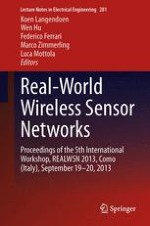This edited book presents the results of the 5th Workshop on Real-world Wireless Sensor Networks (REALWSN). The purpose of this workshop was to bring together researchers and practitioners working in the area of sensor networks, with focus on real-world experiments or deployments of wireless sensor networks. Included were, nonetheless, emerging forms of sensing such as those that leverage smart phones, Internet of Things, RFIDs, and robots. Indeed, when working with real-world experiments or deployments, many new or unforeseen issues may arise: the network environment may be composed of a variety of different technologies, leading to very heterogeneous network structures; software development for large scale networks poses new types of problems; the performance of prototype networks may differ significantly from the deployed system; whereas actual sensor network deployments may need a complex combination of autonomous and manual configuration. Furthermore, results obtained through simulation are typically not directly applicable to operational networks; it is therefore imperative for the community to produce results from experimental research. The workshop collected the state of the art in emerging and current research trends dealing with Real-world Wireless Sensor Networks, with the aim of representing a stepping stone for future research in this field.
